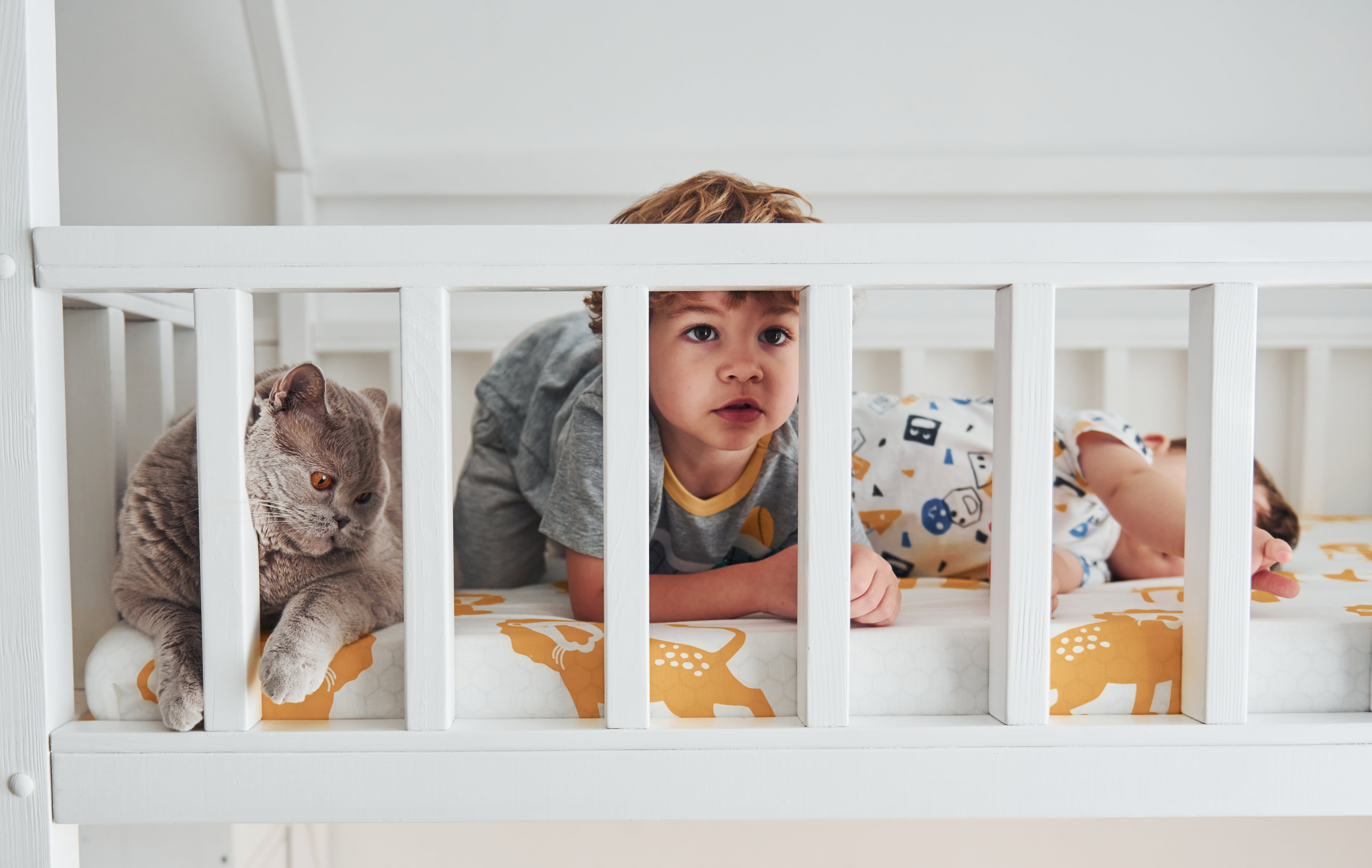Bedside Cosleeper
A bedside cosleeper is attached to your adult bed. As long as you adhere to the CSPC guidelines for infant sleeping spaces it's secure.
These guidelines are very similar to crib bedding standards. You can learn more about these guidelines here. When selecting a bedside sleep device, safety, comfort, and ease of use are the primary factors to consider.

Safety
Many new parents and expectant mothers have chosen to cosleep or bed-sharing, as per the American Academy of Pediatrics recommendation that infants should sleep in the same bedroom as their parents. The Academy says that sharing rooms is more secure than sleeping with babies in the same bed because it reduces instances of Sudden Unexpected Death in Infants (also known as SIDS). While the AAP does not recommend bed sharing, it does recommend that co-sleeping be done on a separate sleep surface to minimize the risk of SIDS. The development of the bedside crib was essential for a number of families.
A bedside cosleeper is a similar to a crib sleeper that can be attached to an adult bed frame. The bedside cosleeper lets parents keep an eye on the baby and gives them the option of sleeping in their own bed. The most reliable cosleepers are made with top-quality materials and adhere to strict safety standards. To ensure your child's safety, look for the Juvenile Products Manufacturers Association stamp of approval. This is a sign of rigorous testing and quality control.
The safety of a crib is dependent on several aspects. It is dependent on how it's installed and secured onto the mattress of the parent. If bedside cot co sleeper is not attached to the parent's bed in a way that blocks the gaps and openings where an infant can become trapped, it could pose a suffocation hazard. It is vital that the attachment system of the bedside sleeper is examined to make sure that it can withstand any forces that are imposed during use, for example the parent rolling on and off the sleeper. The attachment system, or the corners on the bedside cosleeper must be tested against an upward force.
The standard for bedside cribs incorporates, by reference, the federal consumer product safety standards for bassinets (16 CFR part 1218) which includes specifications for the performance of closed openings. The standard's requirements for mandatory compliance tackle the issue of neck and head traps by requiring after the application and release 50 lbs. horizontal force near the attachment systems and at the corners of the bedside sleeper, an opening that is greater than 1.0 in. It is not allowed to create a gap that is greater than 1.0 in. Read-only copies of the standard can be accessed at ASTM's electronic Reading Room.
Convenience
Many parents do not allow cosleeping because they are afraid of being suffocated or SIDS or because it's an "Ferberization" that forces children to sleep on their own. However, anthropologists have observed for a long time that many primates, mammals and people from non-Western cultures sleep frequently. This could be due to the fact that infants are comforted by the familiar voice of their mother, and it also helps them learn to self-soothe.
The best bedside sleepers feature an innovative design that is attached to the side of any bed and can be swiveled for ease of access to feedings in the middle of the night or diaper changes. Look for a model with adjustable feet that retract to accommodate different sizes of mattresses. It should also come with ample storage space for everything your baby needs.
Choose a bedside sleeper which fits the standard crib bedding to be used safely as your child grows. You might also think about an adjustable model that can transform into a play yard or deeper bassinet to last for years of use. It folds easily for travel.
Portability
A bedside sleeper with wheels or a light base is much easier to move than one with a bulky wooden frame or a substantial base. The babybay bedside sleeper, HALO bassiNest essencetia, as well as Snoo Smart Sleeper are all movable. They have adjustable feet that can be retracted to accommodate platforms; legs that fold inward to provide maximum access to the mattress; and 100 mesh sidewalls for airflow without covering baby's mouth or nose.
The Arm's Reach ClearVue is a great choice. It adjusts in 1" increments and can be used as a bassinet, or a portable bed. It also swivels, allowing the baby to be easily accessible to comfort, nurse or check on her during the night.
